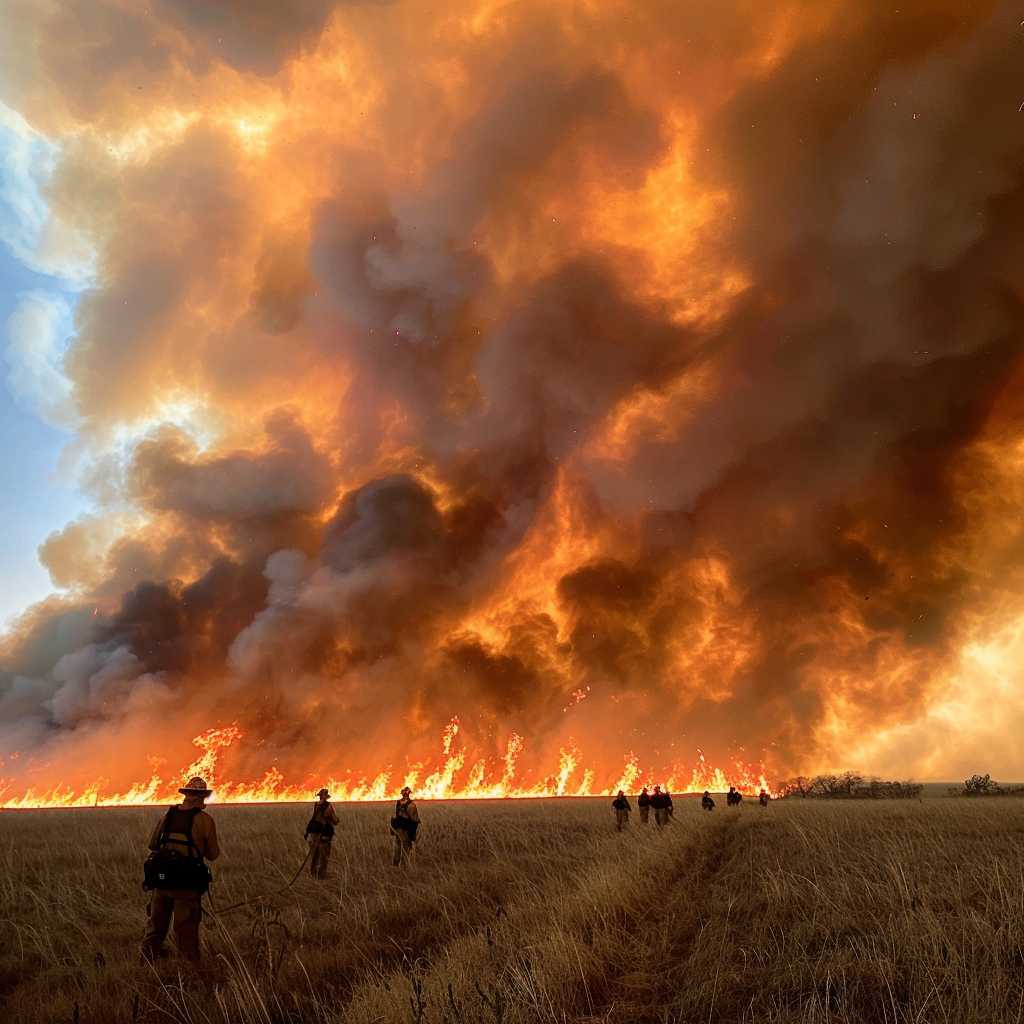Understanding Texas Wildfires: Causes, Challenges, and Management Strategies
Texas has a vast landscape that’s both beautiful and susceptible to wildfires. Understanding the factors contributing to wildfires, the tools used to combat them, and their impact is crucial for preserving the environment, properties, and lives.
Causes of Wildfire Outbreaks in Texas
Natural factors and human activities contribute significantly to the initiation and spread of wildfires across Texas. Lightning strikes can set dry vegetation ablaze during thunderstorms. Topographical elements like hills and canyons can magnify a fire’s intensity by influencing wind flow and directing flames. However, humans are responsible for a large percentage of wildfires, whether through negligent actions like leaving campfires unattended and discarding cigarettes, or planned actions such as controlled burns that unintentionally spread.
Significant drought conditions exacerbate Texas’s fire season. With vegetation turned tinder-like due to irregular rainfall patterns possibly linked to climate change, fires start easier and spread more rapidly. The state’s periodic windy conditions then fan these fires, increasing their velocity and spread.
Firefighting Techniques in the Lone Star State
Texas utilizes various bodies in its impressive arsenal against wildfires. Local fire departments collaborate with agencies like the Texas A&M Forest Service, which plays a leading role in wildland firefighting efforts alongside volunteers and other state agencies. These entities use strategies encompassing direct and indirect attacks on fires. For instance, creating firelines—clear strips on the ground intended to remove fuel sources—helps contain fires.
The use of aerial support—including helicopters making water drops and planes releasing fire retardant—is common in battling broader wildfires. Furthermore, predictive services give critical insight into weather patterns and possible hot spots, directing the deployment of resources more efficiently.
Technologies like GIS (Geographic Information Systems) allow firefighters to map fires’ progress in real time, while drones offer recon capacity in assessing fires without risking lives. Increasingly advanced communication tools ensure coordination between different departments and across jurisdictions.
Impacts on Community and Environment
Wildfires have a profound effect on not only the ecology of Texas but also its residents. Properties near wildland areas face destruction when fires grow uncontrollable, leading to entire communities sometimes needing evacuation. The aftermath of such events poses lingering risks such as a higher susceptibility to flooding due to a lack of vegetation which ordinarily absorbs rainfall.
Ecologically, fires can be damaging or nurturing; some ecosystems need periodic fires for rejuvenating landscapes, whereas others suffer from species depletion as a result of intense blazes. Wildlife is not only displaced but also suffers direct mortality from these often-rapid events.
Smoke from wildfires presents health challenges by reducing air quality both locally and in areas where prevailing winds may drag it over great distances. This problem emphasizes the broader impact of Texas wildfires—effects are not contained solely within fire perimeters.
Techniques in Wildfire Prevention
Preventive measures play a crucial role in mitigating the incidence of wildfires. Controlled burns conducted by professional teams aim to diminish undergrowth that can build up and become a danger during dry seasons. Public education campaigns target homeowners with guidance on creating defensible spaces around properties—an essential step for communities in traditionally fire-prone zones.
Statewide initiatives focus on land management: incorporating wildfire risk into town planning by constraining development in areas with pronounced vulnerability to forest fires is one example. Maintaining wide roads for evacuation routes and ensuring adequate emergency access is part of good practices essential for safe urban planning.
Economic Implications
The damage from a singular major wildfire can run millions of dollars—impacting not only individuals who lose property but also local economies struggling with aftermath management costs including rehabilitation of affected landscapes. The burden carried by insurance agencies after massive infernos shakes up premium rates, emphasizing the value of investing in proactive measures rather than solely focusing on reactive processes.
Notes
Image description: A panoramic image showcasing a large wildfire consuming acres of dry grassland in Texas with plumes of thick smoke rising into the sky; several small silhouettes might be seen at the foreground representing firefighting personnel attempting to control the spread amidst challenging conditions.
